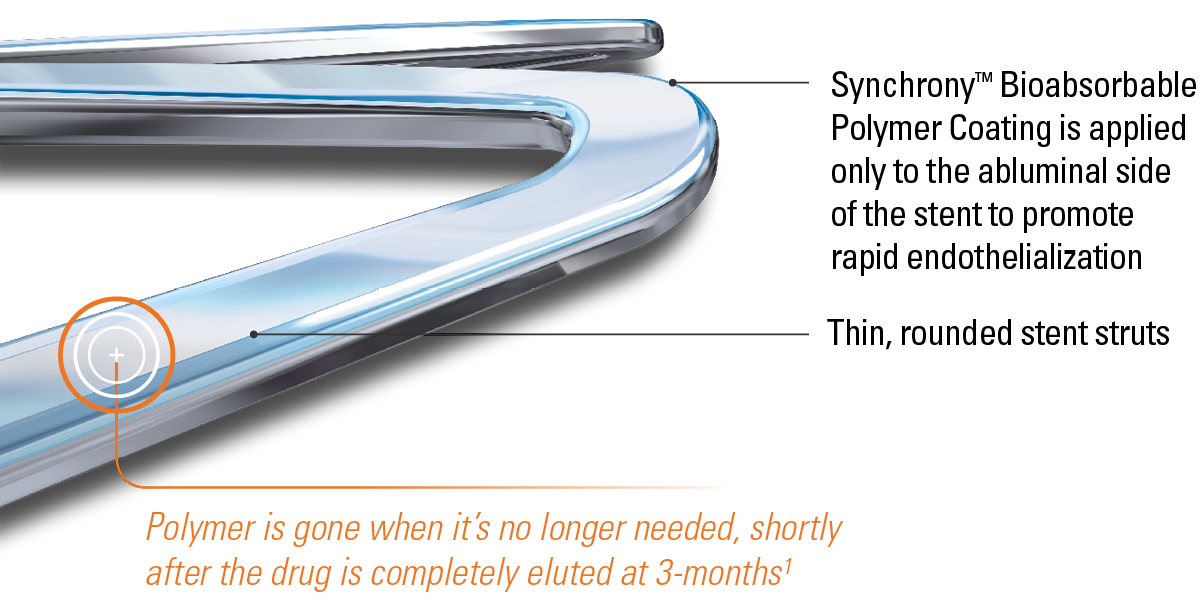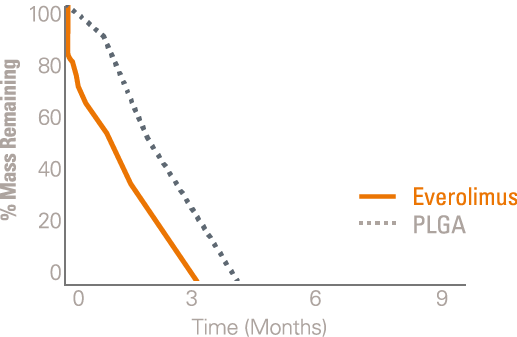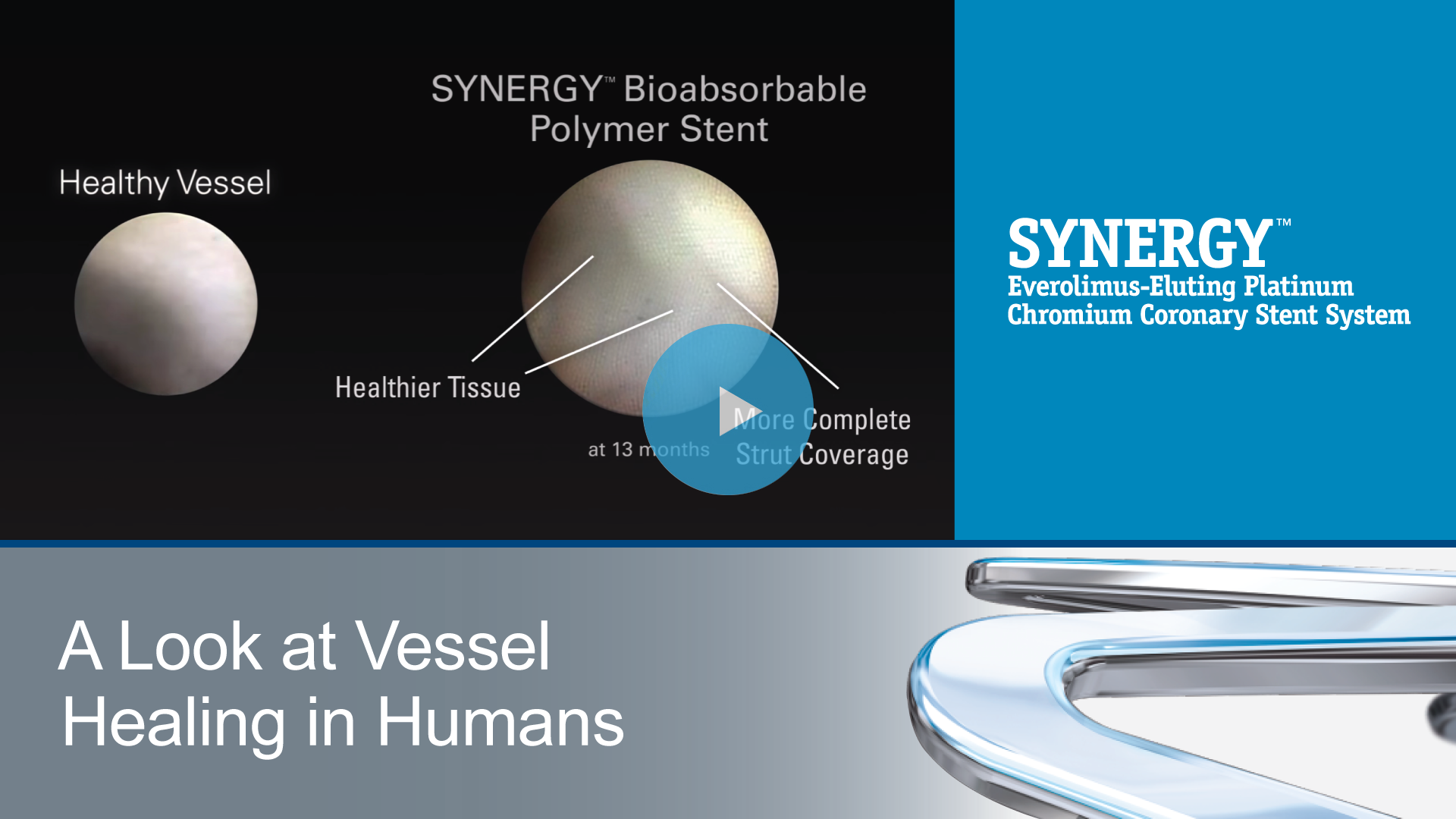SYNERGY™
Everolimus-Eluting Platinum Chromium Coronary Stent System
The SYNERGY BP Stent is a new category of stent that works synergistically, emphasizing the suppression of neointimal growth at the arterial wall while promoting healing inside the vessel. It features the Synchrony™ Bioabsorbable Polymer Coating, which is applied only to the abluminal side of the stent to promote rapid endothelialization.2
1. Wilson GJ et al, Catheter Cardiovasc Interv. 2015.
2. Eppihimer M, PhD. Impact of Polymer Type and Location on Stent Thrombogenicity and Endothelial Cell Coverage. EuroPCR 2014.
Freedom from Long-Term Polymer Exposure
The polymer on the SYNERGY BP Stent is absorbed when it’s no longer needed, shortly after the drug is completely eluted at three months, providing early healing and freedom from long-term polymer exposure.1
It was designed to address the challenges associated with permanent polymer stents such as inflammation, neoatherosclerosis and late stent thrombosis.
Everolimus is still present in the tissue out to 120-days while polymer completes absorption
1. Wilson GJ et al, Catheter Cardiovasc Interv. 2015.
2. Soucy N, Feygin J et al, EuroIntervention. 2010 Nov;6(5):630-7
3. Presented by J. M. de la Torre, MD at EuroPCR 2014
4. Presentation by Kazuyuki Yahagi, MD; Michael Joner, MD; Renu Virmani, MD at TCT 2014.
*Strut thickness for small vessel model is 0.0029” (74μm), Workhorse model is 0.0031” (79μm) and large vessel is 0.0032” (81μm). Boston Scientific data on file.
Optimal Healing Shown Through Strut Coverage and Angioscopy

Angioscopic images of stented human vessel at 12 and 13 months

** Images captures at 12-month follow-up
1. Adapted from poster presentation on behalf of Ida Riise Balleby, MD at ACC2016.
2. Presented by J. M. de la Torre, MD at TCT 2014.
3. Adapted from presentation by Juan Granada, MD, at CRT 2015.
4. de la Torre Hernández JM, et al. Catheter Cardiovasc Interv. 2015: Online ahead of print.
5. Nakayoshi T, Ueno T, Sasaki K, et al. Differential angioscopic findings of neointimal coverage among first-, second-, and next generation drug eluting stents. Int J Cardiol. 2016;223:450-451. Images courtesy of Professor Ueno.



